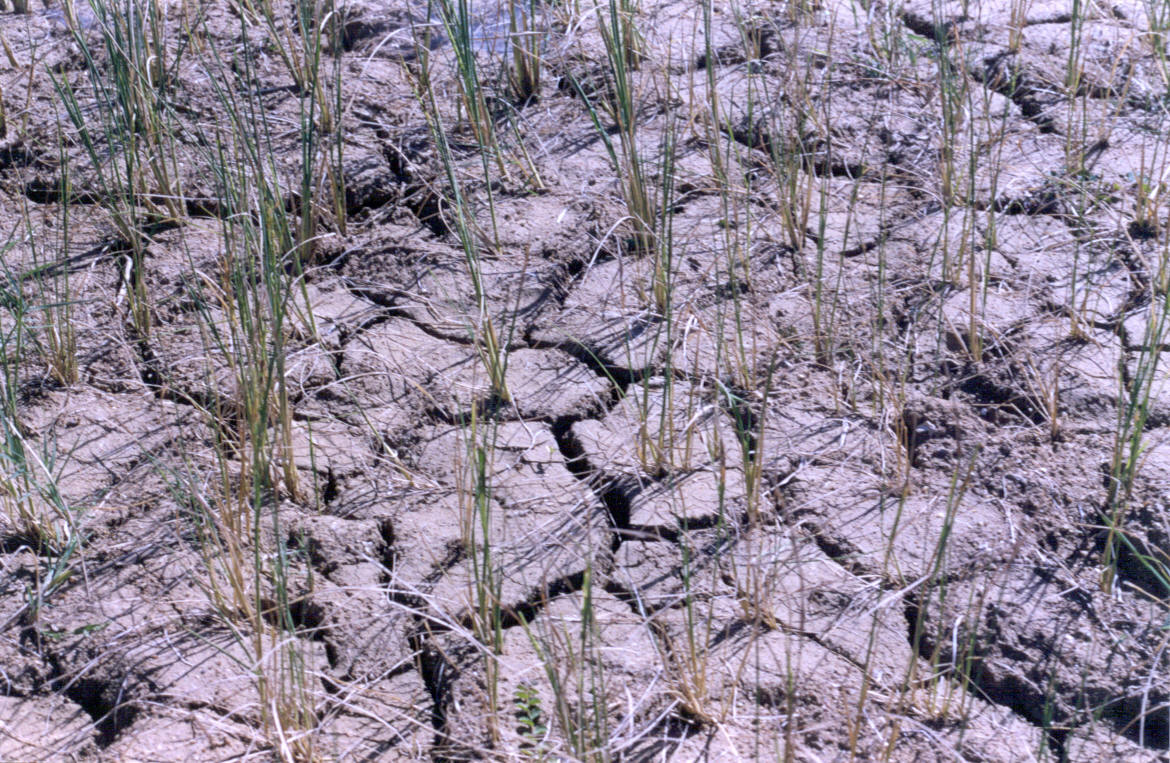
Agricultural News
Forage Production Beginning to Take Hit from Renewed Drought Conditions in Oklahoma
Mon, 09 Jul 2012 14:50:22 CDT

Last year's drought, which looked to be broken with above-average spring rains, has once again begun to assert itself says Oklahoma State University Extension Livestock Marketing Specialst Derrell S. Peel in the new edition of the Cow-Calf Newsletter. While conditions in Oklahoma are not yet as bad as last year, producers are feeling the heat from Kansas through Nebraska, into the Dakotas and Wyoming. Forage producers here are home are feeling the heat.
Forage production in much of Oklahoma has been better than last year but conditions are deteriorating rapidly. Pastures and hay fields have almost stopped growing in many cases and this means that producers may be seeing all the forage they will have to work with unless conditions improve. Many Southern Plains cattle continue to have reduced stocking rates that carry over from herd liquidation last year and this may reduce or delay additional liquidation if drought advances this summer. Nevertheless, producers should determine right away what their forage supply situation is and determine if and when some cattle marketings may be needed.
The drought this year is quite different from last year in several respects and that may impact the likelihood and severity of market impacts compared to last year. According to the Drought Monitor, there is less severe but more widespread drought so far this year. Last year at this same time, nearly 12 percent of the country was in the worst drought category (D4), much of that located in the southern plains compared to less than one percent in D4 now. The total of D3 and D4 last year was just under 19 percent compared to 10 percent this year. However, at the current time over 76 percent of the U.S. is abnormally dry (D0) or worse compared to last year which is roughly double the 37 percent of abnormally dry or worse conditions this time one year ago. Finally the fact that is the second year of drought makes the implications this year different from last year.
One potentially different implication is the hay situation in the country. Last year, excellent hay production in the northern half of the country supplied the tremendous demand for hay in the Southern Plains and resulted in what is no doubt the largest and most far reaching movement of hay ever seen in the country. However, reduced total hay production in 2011 combined with drought magnified demand, resulted in significantly smaller hay stocks on May 1, 2012 in many central and southern plains and Midwest states. The widespread drought this year is no doubt limiting hay production again so overall supplies will be tight and with drought concerns over a broad area, hay stocks will be held in tighter hands this year. There will be less hay available, at any price, if the drought continues this summer.
Cattle markets are more vulnerable to short run price impacts due to drought this year compared to last year. Because the drought region was so focused last year and conditions were so drastically different (better) in other regions, the enormous marketings of feeder cattle and cows last year has less impact than typical for a drought of that magnitude. Last year, the ability to relocate cattle to regions of good forage or into feedlots combined with an overall strong cattle market situation kept market price impacts for feeder cattle and cows to a minimum.
This year, widespread drought over a much larger region, even if the drought overall is less severe, reduces those options and increases the likelihood of more pronounced short term market impacts. A few people selling some animals over a wide area is likely to have more market impact than many people selling lots of animals in one region when good conditions exist outside that region. For producers who determine now that some feeder cattle or cows will need to be sold before fall, the danger of waiting is higher over the next couple of months. This is especially risky since the drought is not only impacting pasture and hay production but is also impacting feeder markets through sharply higher corn prices.
In one respect this year is like last year. The drought is changing the timing of feeder cattle sales and early sales of calves and feeder cattle means that feeder supplies will be even tighter later. Depending on how the drought develops this summer, calf markets could rebound significantly this fall. In Oklahoma, this will depend on having fall moisture and decent wheat pasture grazing prospects.
You can catch the latest BEEF BUZZ with Ron Hays and Derrell Peel by clicking here. They discuss in more detail how the worsening drought, feed, and forage conditions are impacting cattle markets.
WebReadyTM Powered by WireReady® NSI
Top Agricultural News
More Headlines...




















